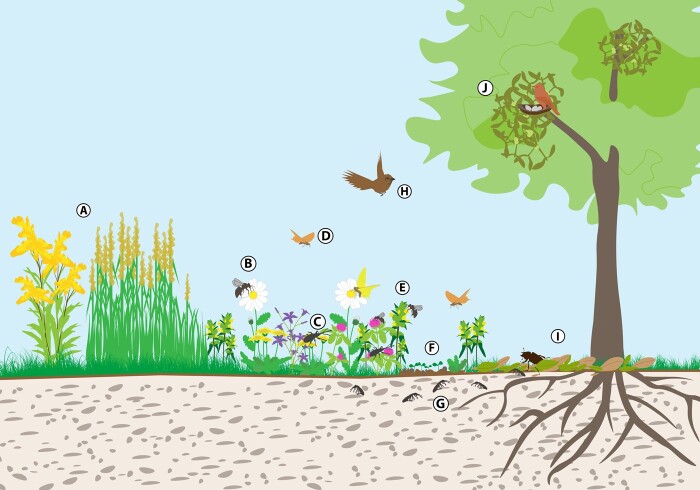Figure 1.
Illustration of functional roles of most significant parasitic plant groups (mistletoes and root hemiparasites) in ecosystems. A, Competitive alien invasive species and native invaders thriving in the absence of parasitic plants. B, Change in the plant community, increasing biodiversity. C, Diversified food supply for herbivores. D, Increased diversity and abundance of pollinators (e.g. Hymenoptera, Lepidoptera, Diptera). E, Root hemiparasite as ecosystem engineer and food opportunity for pollinators and herbivores. F, Sward gap for seedlings establishment. G, Increased soil organic matter and edafauna (Collembola, microorganisms). H, Increased food opportunity for seed herbivores and predators, seed dispersion by herbivores. I, Increased nutrient-rich litter, decompositors, and other animals living in litter. J, Mistletoe – opportunity for nesting, food, shelter.

